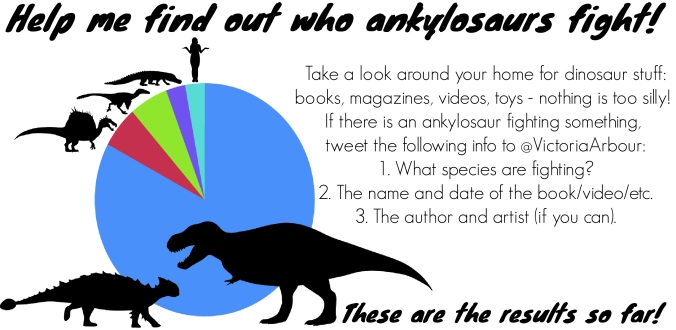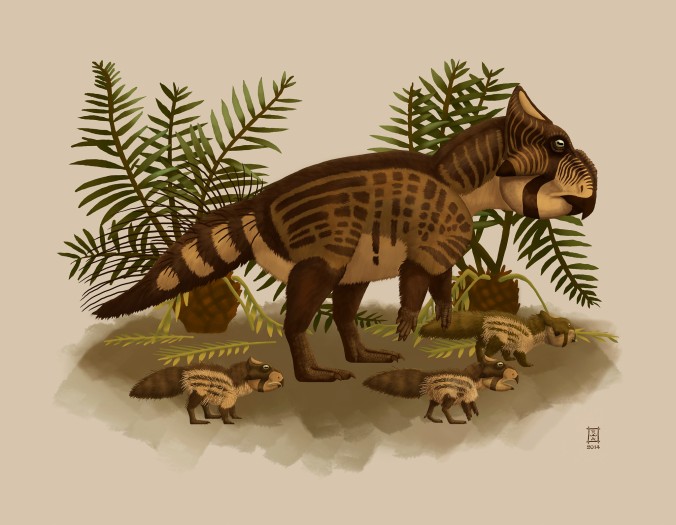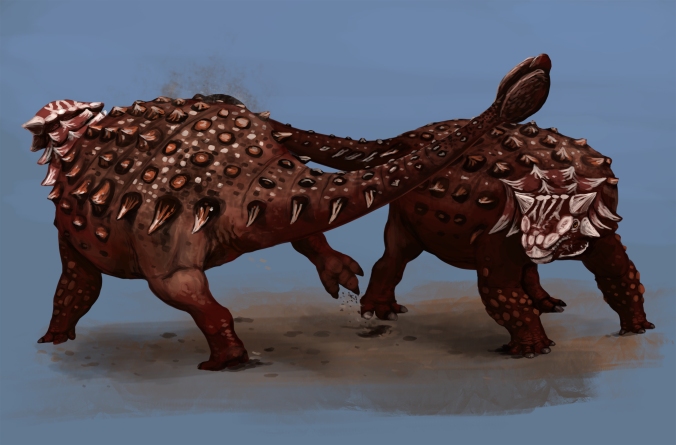Pseudoplocephalus has a new home! WELCOME!
Over the many years I’ve spent thinking about ankylosaurs, I’ve amassed a not insubstantial collection of ankylosaur stuff. And one of the things that I’ve noticed is that when ankylosaurids are shown wielding their tail clubs as weapons, they are almost always fighting some kind of tyrannosaur (but usually Tyrannosaurus, of course). Are there any illustrations that show ankylosaurids fighting anything different?
Back in January I asked my Facebook friends and Twitter followers to look in their homes for ankylosaurs fighting things and to let me know what they found, and now, blog readers, I am asking the same of you! Find some ankylosaurs fighting something and either tweet it to me (@VictoriaArbour) or leave a comment below!
Here’s what the preliminary results from my January request look like! (And yes, there was one example of an ankylosaurid tail clubbing a human.) The data I get from all of you will help me develop hypotheses for better understanding the selective pressures that led to the evolution of tail weaponry in ankylosaurs. Have at it!

 Many thanks to Raven Amos for permission to use her wonderful leptoceratopsid illustration for publicizing this research!
Many thanks to Raven Amos for permission to use her wonderful leptoceratopsid illustration for publicizing this research!






